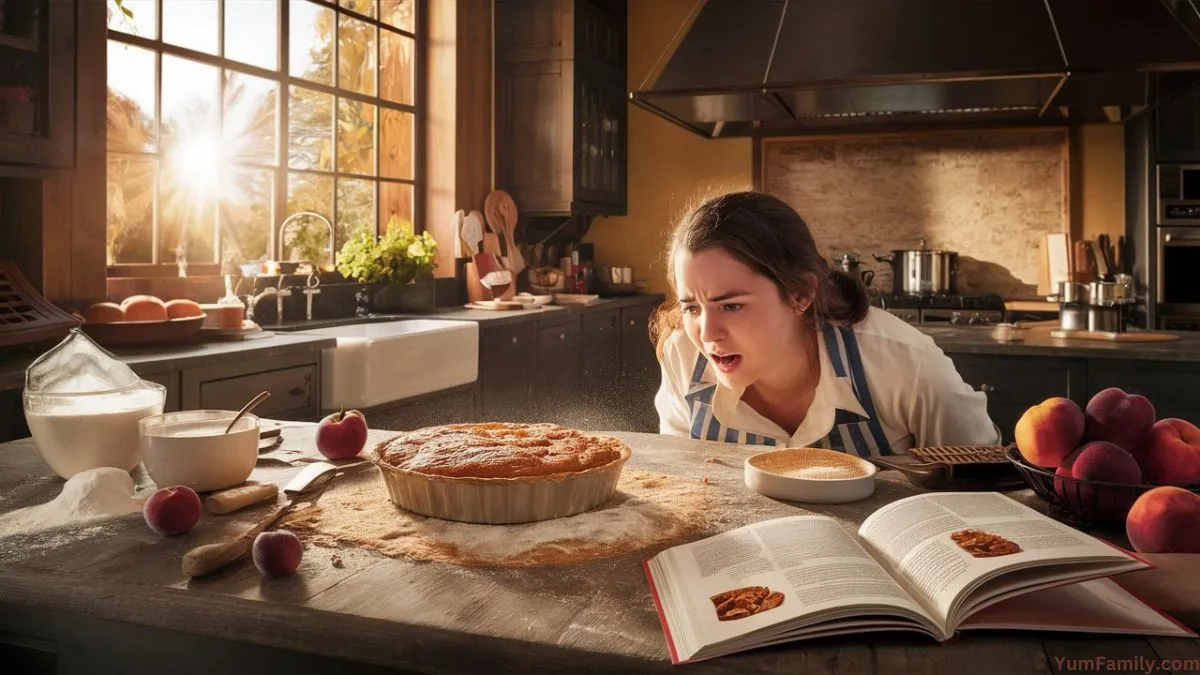Introduction
Why did my cobbler turn out like cake? This question perplexes many home bakers. If you’ve ever anticipated a bubbly, biscuit-topped delight but ended up with something resembling a cake, you’re not alone. In this article, we’ll delve into the common causes and provide you with the know-how to achieve the perfect cobbler next time.
Understanding Cobbler and Its Textures
A traditional cobbler is a staple of American desserts, known for its fruity filling and a biscuit-like topping that’s supposed to offer a slight crunch. Understanding what sets a cobbler apart from related desserts like crumbles and pies is crucial. The texture of the topping can vary, but it should never mirror that of a cake.
- Cobbler vs. Pie vs. Crumble: A pie features a base and sometimes a top crust, while a crumble includes a streusel topping.
- Desired Cobbler Texture: The ideal cobbler topping is biscuity with a bit of crisp.
- Common Variations: Some regions may introduce a softer, more cake-like topping, but it should not dominate the fruity base.
For more insights on the traditional textures of cobblers, check out Delicious and Easy Peach Cobbler with Cake Mix Recipe, a treasure trove of baking wisdom.
Common Mistakes Leading to Cake-Like Texture
Why might a cobbler turn out more like a cake? It often boils down to the ratio and type of topping used. If the topping is too heavy or mixed like a cake batter, it will rise and cover the fruit completely, leading to a cakey texture.
- Flour or Batter Overuse: Too much can lead to a dense topping.
- Incorrect Fruit to Topping Ratio: A balanced ratio is crucial.
- Baking Temperature and Time: Mismanagement can affect the final texture.
Understanding the characteristics of your ingredients can also prevent a cake-like outcome. Learn more about ingredient impacts at the Exploratorium’s Science of Cooking.
Ingredients Impact
The choice of fruit and its preparation can significantly influence the moisture content and overall texture of the cobbler.
- Type of Fruit Used: Juicy fruits require different handling than drier varieties.
- Fresh vs. Frozen vs. Canned Fruits: Each type affects the moisture content of the dessert.
- Ingredient Proportions and Mixing Techniques: Proper measurements and mixing methods are essential to avoid a cakey texture.
The way ingredients interact is critical for achieving the right consistency. Therefore, paying attention to the details of each component is vital for a successful cobbler.
Baking Techniques and Tips
Proper baking techniques can make or break your cobbler. Here are some tips to ensure that your dessert comes out perfect every time.
- Mixing and Layering Techniques: Gentle mixing and correct layering are key.
- Temperature Control: Bake at the right temperature to ensure even cooking.
- Using the Right Bakeware: The size and type of baking dish can influence heat distribution and cooking time.
Troubleshooting Common Cobbler Problems
When your cobbler doesn’t turn out as expected, it can be disheartening. Here are some strategies to help you identify and fix common issues:
- Adjusting Wet and Dry Ingredient Ratios: Finding the right balance can prevent a soggy or overly firm topping.
- Solutions for Uneven Cooking: Rotating the dish during baking can help.
- Rescuing an Overly Cake-Like Cobbler: If the topping is too thick, consider reducing the amount of batter or adjusting the type of topping used in future attempts.
These adjustments can help refine your technique and ensure that your cobbler is delicious every time.
FAQs
Answering some frequently asked questions can also provide additional insights into perfecting your cobbler:
- Why is my cobbler not crispy? The crispiness can be affected by the type of topping, the amount of butter used, and the baking temperature.
- Can I use any type of fruit for cobbler? While you can use almost any fruit, the amount of sugar and thickener might need to be adjusted based on the fruit’s juiciness.
- How do I know when my cobbler is done? The topping should be golden brown, and the filling should be bubbly around the edges.
Each of these questions addresses common concerns that can impact the outcome of your dessert.
Conclusion
Creating the perfect cobbler doesn’t have to be a mystery. By understanding the common pitfalls and how to avoid them, you can ensure that your cobbler turns out delightful rather than cake-like. Remember, the key to a great cobbler lies in the balance of ingredients, proper baking techniques, and the right troubleshooting skills. With these tips, you’re well on your way to baking a cobbler that will impress your friends and family.


1 thought on “Why did my cobbler turn out like cake?”